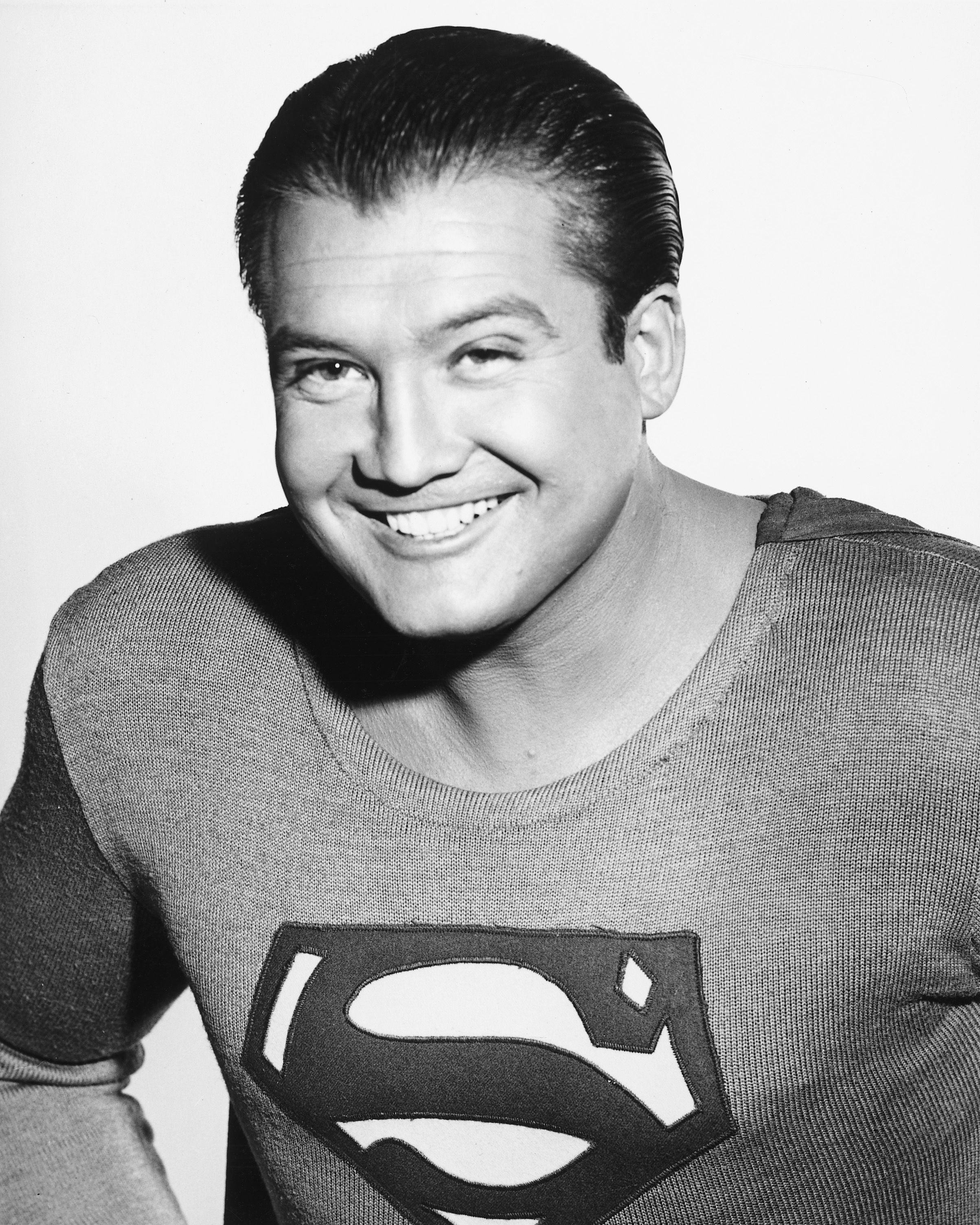There’s an undeniable magic that happens when fashion meets the silver screen. A carefully chosen outfit, a daring accessory, or even a simple piece of swimwear can transcend its original purpose, becoming a symbol that defines a character, an era, or an entire cultural movement. We’ve seen it time and again, where a particular ensemble etched itself into our collective memory, sparking trends, conversation, and a whole lot of inspiration.
For decades, films have not just entertained us; they’ve been powerful arbitraters of style, especially when it comes to the often-controversial yet always captivating world of swimsuits. From the glamorous one-pieces of the Golden Age to the daring two-pieces that pushed boundaries, movie swimwear has consistently captured our imaginations. It’s more than just beach attire; it’s a narrative device, a statement of confidence, and an emblem of liberation.
Today, we’re diving deep into the cinematic archives to celebrate 12 unforgettable movies that, through their iconic swimsuit moments, undeniably made bikinis and swimwear an enduring and influential fashion statement on screen. Get ready to revisit some truly legendary looks that continue to inspire and empower, proving that some fashion statements are simply too iconic to ever fade away.

1. **Marilyn Monroe in How to Marry a Millionaire (1953)**
When we talk about timeless screen sirens and iconic fashion moments, Marilyn Monroe is almost always at the forefront of the conversation. In the classic comedy film ‘How to Marry a Millionaire’ (1953), Monroe delivered a performance that, much like her career, was utterly captivating and left an indelible mark on cinematic history. Her character, Pola Debevoise, a charming and naive model with aspirations of marrying into wealth, perfectly embodied the era’s blend of innocence and burgeoning sensuality.
The scene in question, set by a luxurious poolside, sees Monroe confidently strutting out in a stunning one-piece swimsuit. This wasn’t just any swimsuit; it was a testament to the power of classic Hollywood glamour, effortlessly showcasing Monroe’s unparalleled allure. The way she moved, the confidence she exuded, transformed a simple swimwear moment into a powerful visual statement that resonated with audiences then and continues to do so today.
It’s not hard to understand why a scene featuring this lady wearing a swimsuit remains etched in people’s memory forever. Monroe’s ability to infuse every frame with her unique charisma made this one-piece swimsuit moment an emblem of mid-century glamour. It epitomized a sophisticated sex appeal that was both aspirational and deeply engaging, proving that iconic fashion isn’t always about revealing the most, but about owning the moment with undeniable presence. Her poolside appearance set a benchmark for how a swimsuit could elevate a character and become a focal point of discussion.

2. **Deborah Kerr in From Here to Eternity (1953)**
Just as cinematic history was being written with glamorous poolside displays, another film was making waves with a scene that was far more scandalous for its time. Deborah Kerr, a brilliant actress, made a truly lasting impression in the film ‘From Here to Eternity’ (1953), a powerful drama where she portrayed Karen Holmes, a neglected wife grappling with profound loneliness and a desperate search for love. It was a role that, surprisingly, found its most iconic expression on a Hawaiian beach.
The scene, which has become legendary, features Kerr’s character having a passionate encounter with Burt Lancaster’s character on a picturesque Hawaiian beach. Kerr appeared in a halter top swimsuit, and the sheer intensity of the moment, coupled with the provocative nature of the attire for the early 1950s, created an instant sensation. This was a time when on-screen sensuality was often implied rather than explicitly shown, and this scene pushed those boundaries significantly.
Interestingly, the production of the film faced challenges while shooting the beach scene. The sand was scorching hot, and Kerr struggled to adjust to the tropical climate, adding a layer of behind-the-scenes drama to an already charged moment. Despite these difficulties, the raw emotion and undeniable chemistry between the actors, amplified by the daring swimwear, ensured the scene’s place in cinematic lore. Officials even demanded that a skirt be added to her wardrobe so that the scene wouldn’t be considered so provocative, a testament to its boundary-pushing nature.
Despite the addition of the skirt, the scene still smoldered, and Kerr’s career took off as she ended up being nominated for the best actress Oscar six times throughout her life. Her performance in the swimsuit scene contributed to the film’s enduring legacy, showcasing how a swimsuit moment could be deeply embedded in a film’s dramatic core. She even famously said, “I don’t think anyone knew I could act until I put on a bathing suit,” underscoring the powerful, albeit unexpected, impact this scene had on her career and public perception.

3. **Jane Russell in The French Line (1953)**
Another screen legend who made headlines with her swimwear in 1953 was Jane Russell, whose appearance in ‘The French Line’ sent ripples through audiences and media alike. This musical romantic comedy showcased Russell as Mary Carson, a wealthy heiress embarking on a European adventure, and it provided a perfect canvas for her undeniable confidence and magnetic screen presence. Russell, known for her bold personality and distinctive style, effortlessly commanded attention.
There’s a particular scene where Russell wears a fabulous swimsuit that exquisitely shows off her confidence and charm. This was not just a costume; it was an extension of her persona, designed to highlight her powerful silhouette and unapologetic allure. The fashion choice was deliberate, reflecting a broader cultural shift towards more daring and figure-conscious swimwear, and Russell wore it with an ease that made it seem revolutionary.
People couldn’t stop talking about it, and the movie became quite famous because of that. The buzz surrounding her swimsuit moment was immense, generating considerable public discussion and even making it into the news. This was a clear indicator of how a single fashion choice in a film could capture the zeitgeist, drawing significant attention toward the movie itself and cementing Russell’s image as a captivating and trailblazing icon.
Her ability to blend glamour with a hint of playful defiance made her swimsuit moment in ‘The French Line’ a pivotal point in film fashion. It wasn’t just about the garment; it was about the woman wearing it, who radiated an empowering confidence that influenced countless women and ensured this particular swimwear look remained unforgettable in the annals of cinema.
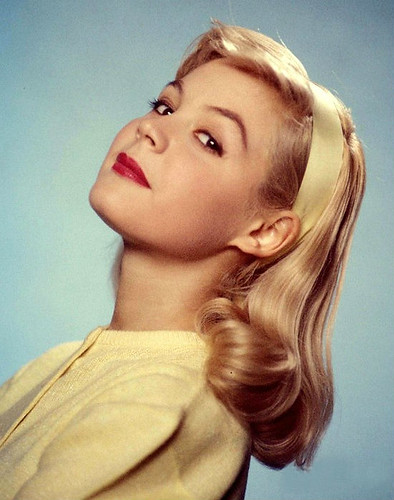
4. **Sandra Dee in Gidget (1959)**
As the 1950s drew to a close, a new wave of youth culture was beginning to crest, and with it came films that captured the burgeoning excitement of teenage life, particularly on the sun-drenched beaches of California. The 1959 movie ‘Gidget’ was a quintessential example, launching an entire series of movies and a television series, all centered around the titular character played by the effervescent Sandra Dee. It’s impossible to imagine a surfer movie without a few surfer girls in swimsuits, and ‘Gidget’ certainly delivered.
Dee’s portrayal of Gidget—a tiny, spirited young woman suddenly captivated by the world of surfer boys—was instantly relatable. Her desire to learn how to surf, getting herself a used surfboard and diving headfirst into the waves, became an emblem of youthful ambition and self-discovery. This narrative provided ample opportunities for the character to don some seriously stylish swimsuits, perfectly encapsulating the burgeoning surfer fashion that was taking hold across the nation.
All the while, Gidget looked sharp in some pretty stylish swimsuits! These weren’t just functional pieces of attire; they were carefully chosen fashion statements that defined the ‘surfer girl’ aesthetic. They were bright, flattering, and embodied the carefree spirit of beach life, influencing countless young women who wanted to emulate Gidget’s look and adventurous lifestyle. The film’s emphasis on beach culture and its associated fashion made these swimsuits central to its appeal.
The enduring popularity of ‘Gidget’ and its spin-offs solidified these swimwear styles as iconic. Sandra Dee’s Gidget made it cool to hit the waves in vibrant, chic swimsuits, forever linking them with the exhilarating freedom of the beach and the burgeoning youth movement. It was a clear demonstration of how film could not only reflect but also actively shape popular fashion trends, making the swimsuit a symbol of youthful rebellion and California cool.
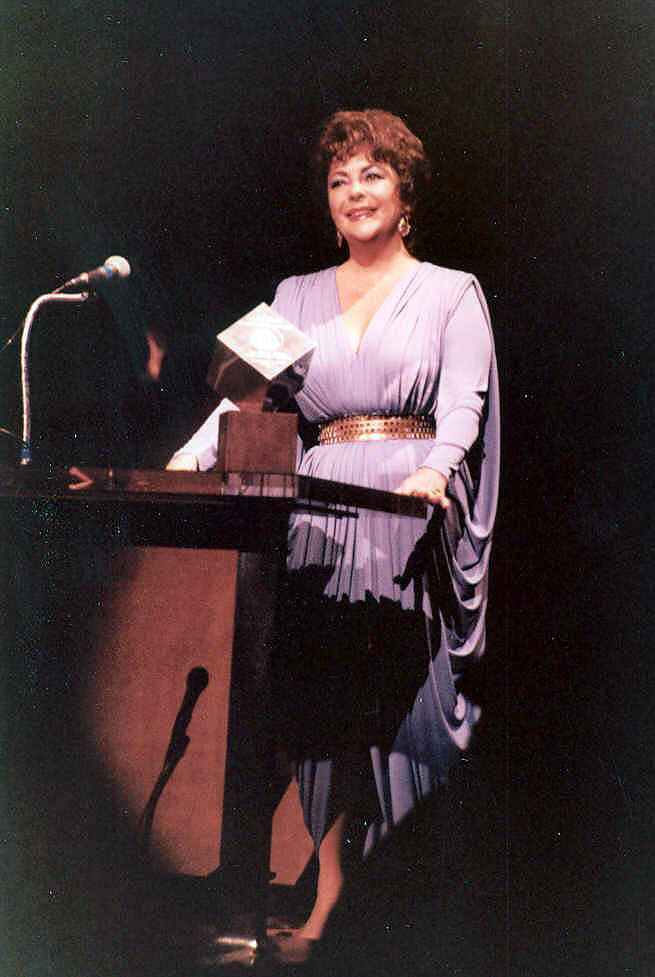
5. **Elizabeth Taylor in Suddenly, Last Summer (1959)**
Elizabeth Taylor, a legend whose life and career were as dramatic and captivating as any film, delivered a truly iconic visual in the 1959 film adaptation of Tennessee Williams’ dark play, ‘Suddenly, Last Summer’. Her portrayal of Catherine Holly, a character enmeshed in a psychologically complex and unsettling narrative, found an unexpected yet profoundly memorable moment in a simple piece of swimwear. It’s a testament to Taylor’s star power that this image has transcended the film itself.
The sight of Elizabeth Taylor wearing this white one-piece swimsuit as Catherine Holly in the film is undeniably iconic. Against the backdrop of the intense and often disturbing storyline, the swimsuit appears almost stark, drawing immediate attention to Taylor’s vulnerability and stunning beauty. According to the story, Catherine’s cousin explicitly asks her to wear the swimsuit in order to attract the kind of women he was looking for, imbuing the garment with a layer of unsettling subtext and making it a key element in the unfolding psychological drama.
The result was a scene that is actually so iconic, the image of Taylor in the white bathing suit is one of the most well-known photos of this actress! This particular image has been reproduced countless times, standing as a potent symbol of both Taylor’s timeless glamour and the film’s dark undertones. It’s an example of how a swimsuit, far from being just a background detail, can become a central, unforgettable image that carries significant emotional and narrative weight.
Through this powerful visual, Elizabeth Taylor not only solidified her status as a fashion icon but also demonstrated the profound impact a single piece of clothing could have in conveying character and plot. The white one-piece became synonymous with her enigmatic presence in the film, proving that a swimsuit could be both alluring and deeply unsettling, leaving a lasting impression on cinematic and fashion history.

6. **Brigitte Bardot in A Very Private Affair (1962)**
When it comes to the popularization of the bikini, one name reigns supreme: Brigitte Bardot. It’s almost impossible to imagine a list of iconic movie swimsuits without acknowledging her pivotal role in transforming the two-piece into a global sensation. Bardot is widely credited with making the bikini not just acceptable, but utterly desirable, forever changing beachwear fashion.
She first stunned audiences and the media when she appeared in ‘The Girl in a Bikini’ in 1952, a moment that undeniably put the nascent swimsuit on the map. A year later, paparazzi captured her sunbathing in a strapless two-piece at Cannes, further fanning the flames of its growing popularity and associating it with her effortlessly chic and sensual persona. These early appearances set the stage for a fashion revolution.
However, her bikini from Louis Malle’s 1962 movie, ‘A Very Private Affair,’ holds a particularly special place in cinematic and fashion history. This specific design, featuring a ruffled bottom and an underwire top, was not just iconic for its time; it was remarkably ahead of its curve. Its style was so enduring that it would effortlessly blend in with contemporary beach fashion, proving its timeless appeal.
Bardot’s ability to imbue every garment with her unique blend of sex appeal and confidence made her an unparalleled style icon. The bikini in ‘A Very Private Affair’ wasn’t just a costume; it was a testament to her enduring influence, solidifying her status as the queen of bikini fashion. Her appearances ensured that the bikini was here to stay, forever changing how women dressed for the beach and cementing its place as a symbol of freedom and allure.
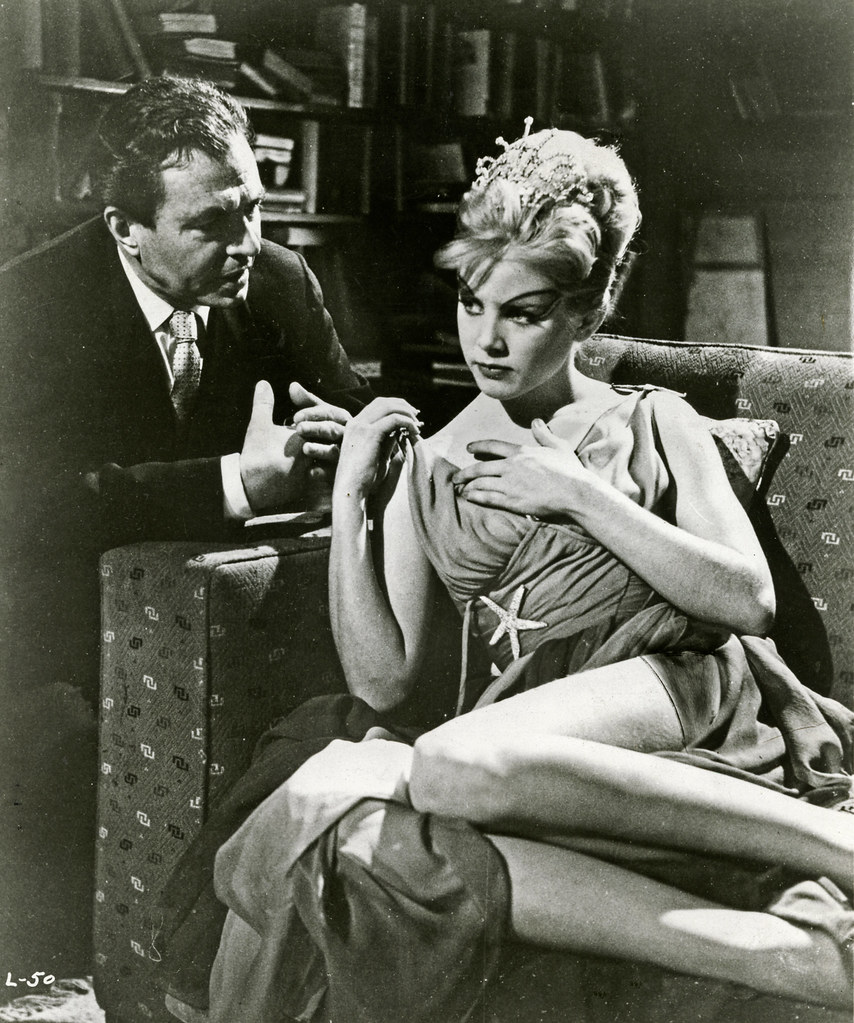
7. **Sue Lyon in Lolita (1962)**
The adaptation of Vladimir Nabokov’s deeply controversial novel, ‘Lolita,’ into a 1962 film by the visionary Stanley Kubrick, was a cinematic event surrounded by immense anticipation and scrutiny. The quest to cast the lead role of Lolita Haze was particularly intense, with almost 800 girls auditioning for the part, each hoping to embody the complex and alluring character. Ultimately, it was former model Sue Lyon who captivated Kubrick and made history.
Lyon, with her fresh face and undeniable screen presence, was chosen to bring Lolita to life. Her portrayal, especially in the scene where the titular character first encounters her older lover, Humbert Humbert, became instantly iconic, not least for her memorable attire. It was in this pivotal moment that she donned a bikini, an act that further cemented the garment’s place in the evolving landscape of cinematic fashion.
The particular bikini chosen for Lyon was an orange, tropical print hipster design, perfectly capturing a blend of youthful innocence and burgeoning sensuality. This was masterfully paired with classic cat-eye sunglasses and a wide-brimmed hat, creating a complete look that was both stylish and evocative. This ensemble quickly became one of Lolita’s most well-known and discussed looks from the film, demonstrating how fashion could underscore character and narrative.
Sue Lyon’s portrayal, enhanced by this distinct fashion choice, helped to make the bikini a symbol of a certain kind of youthful, rebellious allure. It was a daring statement for its time, further pushing the boundaries of what was considered acceptable on screen and making the orange bikini an unforgettable part of film history. The image of Lyon in this swimwear continues to be a powerful visual, symbolizing the film’s provocative nature and lasting impact on pop culture.
Read more about: Beyond the Marquee: Reclaiming the Unsung Brilliance of 14 Forgotten 1960s Actresses

8. **Ursula Andress in Dr. No (1962)**
If there’s one franchise synonymous with iconic swimwear, it’s undeniably the James Bond series. The Bond women, or ‘Bond Girls,’ have consistently delivered some of the most memorable and influential swimsuit moments ever to grace the big screen. Among these, one stands out as truly foundational, a moment that launched a legend and set the standard for generations of cinematic style.
We are, of course, talking about Ursula Andress’s unforgettable appearance as Honey Ryder in the inaugural James Bond film, ‘Dr. No’ (1962). Her dramatic emergence from the Caribbean waters, clad in a stunning white bikini, wasn’t just a scene; it was an event. The image of her, knife strapped to her hip, has become one of cinema’s most iconic entrances, captivating audiences worldwide and selling for over $60,000 at a Christie’s auction in 2001.
This particular Bond bikini, with its distinctive belt and crisp white fabric, was more than just a costume; it was a character-defining statement. It perfectly accentuated Andress’s physique and radiated an aura of strength, independence, and raw sensuality. The image was so powerful that it not only marked the birth of the legendary Bond franchise but also, critically, defined the very essence of the ‘Bond Girl’ – a figure who is as capable and compelling as she is beautiful.
Ursula Andress’s portrayal and her iconic swimwear choice ensured that Honey Ryder became an instant icon, influencing countless subsequent cinematic characters and real-world fashion trends. The scene cemented the white bikini’s place in popular culture as a symbol of daring adventure and timeless allure. It’s a testament to the enduring power of film fashion, showing how a single garment can launch a thousand ships and forever change perceptions of style and heroism.
Read more about: A Groovy Flashback: Meet 13 of the Most Gorgeous Women Born in the 1960s Who Still Captivate Us Today!
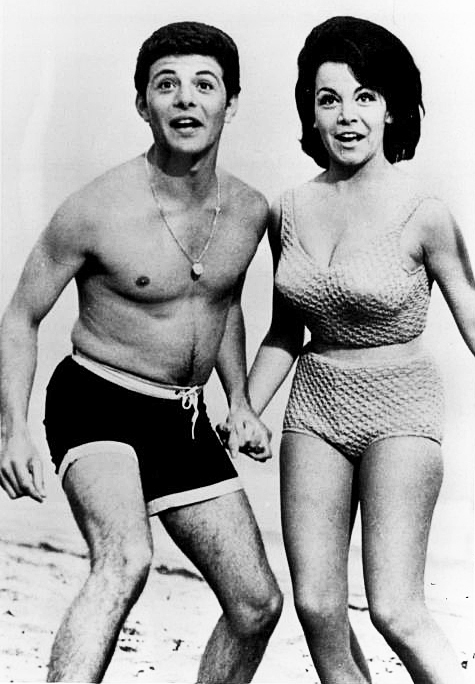
9. **Annette Funicello in Beach Blanket Bingo (1965)**
Annette Funicello was already a household name, beloved by millions as a wholesome Mouseketeer, when she embarked on her role in the 1965 classic beach movie, ‘Beach Blanket Bingo.’ This transition from Disney darling to beach movie queen came with its own unique set of considerations, particularly concerning her on-screen wardrobe. The Walt Disney Corporation, ever protective of her ‘girl-next-door’ image, had some very specific requests regarding her swimwear.
Disney’s primary concern was to maintain Funicello’s innocent public persona, which meant a strict instruction: she was to cover her belly button. This directive aimed to preserve the wholesome image that had endeared her to so many, ensuring that her new role as a beach film star wouldn’t compromise her established brand. It was a fascinating glimpse into the moral codes and celebrity management of the era.
Funicello and the costume department for ‘Beach Blanket Bingo’ meticulously complied with this request. The creative solution was to dress her in a quintessential high-waisted bikini. This style not only elegantly adhered to the “no belly button” rule but also perfectly captured the fashion sensibilities of the mid-1960s, a period embracing vibrant yet often modest beachwear. The high-waisted design became a signature look, enduringly popular even today.
The result was a series of swimwear moments that, despite their modesty, were incredibly chic and influential. Annette Funicello’s high-waisted bikinis in ‘Beach Blanket Bingo’ proved that iconic beach fashion didn’t necessarily require extreme revelation. Instead, they demonstrated how thoughtful design could be both stylish and culturally conscious, endearing her to audiences and cementing her place as a beloved figure in the golden age of beach party films.

10. **Pam Grier in Coffy (1973)**
Stepping into the 1970s, the world of cinema was ready for a new kind of heroine, and the blaxploitation genre delivered with unparalleled force. It truly doesn’t get much more 70s than the fierce, take-no-names Pam Grier in the 1973 movie ‘Coffy.’ This film was a cultural explosion, a revenge plot that saw its protagonist, nurse Coffy, single-handedly taking down a criminal gang to avenge her sister’s death. She was, quite literally, described as the “baddest one-chick hit-squad.”
Grier’s portrayal of Coffy was revolutionary, embodying a powerful blend of vulnerability and unyielding resolve. Her character’s journey was complemented by a stunning array of 70s fashion, each outfit a statement in itself. Amidst a whole host of classic looks, one particular piece of swimwear stood out as exceptionally iconic and emblematic of the era: the macrame bikini.
This macrame bikini, paired with hexagonal shades, became an instant symbol of 70s cool and Grier’s empowering persona. The intricate, handcrafted texture of the macrame added a unique, earthy, and bohemian touch that perfectly aligned with the decade’s aesthetic. It wasn’t just a swimsuit; it was a sartorial representation of Coffy’s fierce independence and trend-setting style, making Grier’s first lead role that much more unforgettable.
Pam Grier’s influence in ‘Coffy’ extended far beyond the screen, cementing her status as a cultural icon and a fashion trailblazer. The macrame bikini moment, in particular, showcased how swimwear could be integrated into a powerful narrative, contributing to the character’s strength and leaving a lasting impression on film history. It underscored how fashion, especially daring swimwear, could become synonymous with empowerment and a truly unforgettable cinematic performance.
From the sun-drenched beaches of Hawaii to the daring streets of 70s action, these films and their iconic swimsuit moments have done more than just entertain us. They’ve chronicled a fascinating evolution of fashion, confidence, and cultural shifts, proving that sometimes, the most enduring statements are made in the simplest, yet most striking, of garments. These iconic movie bikinis and swimsuits didn’t just capture attention; they defined eras, inspired generations, and forever etched themselves into the fabric of pop culture. Here’s to the movies that dared to make a splash, leaving us with a legacy of unforgettable style that continues to resonate today.



